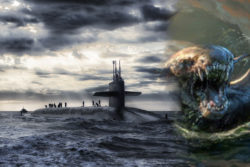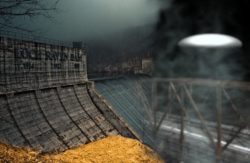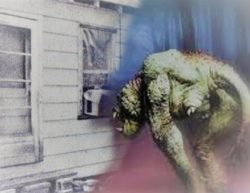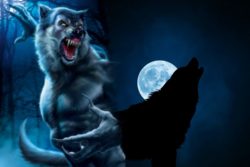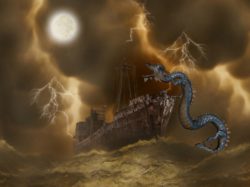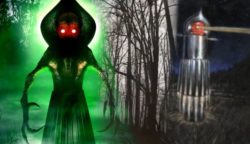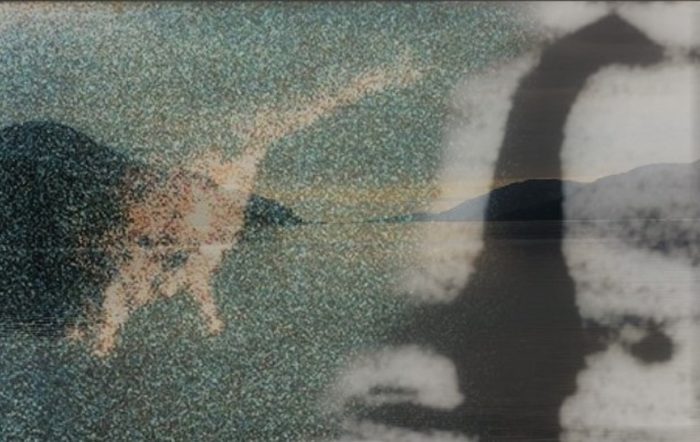
Legends And Accounts Of The Loch Ness Monster
- By
- May 16, 2020
- September 30, 2021
- 23 min read
- Expert Opinion
- Posted in
- Cryptozoology, Sea Monsters
There remains much debate, even today after countless searches and studies, as to whether the Loch Ness Monster, arguably the most famous of the many sea creatures that are said to lurk in waters around the world, actually exists.
Perhaps one of the reasons “Nessie” – as the mysterious beast is often called – remains one of the most well-known and, in turn, the most sought after of such elusive aquatic beasts is that sightings of it stretch back to at least the sixth century. And there are most likely undocumented, oral accounts that existed before that.

Does the Loch Ness Monster really exist?
There are some researchers, especially in recent years, who claim the legends of the Loch Ness Monster were nothing more than a hoax to attract tourists. And while there is certainly some logic in such claims, the sheer number of sightings, combined with an equal volume of sightings from around the world of a similar creature, can surely not simply be dismissed entirely. And while the most famous photograph of the strange creature is almost certainly just such a hoax, the sightings have continued throughout the decades.
As we shall see, despite numerous searches of the loch for the creature it, or they, remains a complete mystery to researchers and enthusiasts alike.
Before we look at some of those retrospective and indeed speculative historical accounts of a strange and terrifying animal lurking in the waters of Loch Ness, we will examine the period of the early twentieth century, when the Loch Ness Monster, at least how we collectively perceive and understand it today, entered the modern psyche.
Contents
- 1 Articles Begin Appearing In The Scottish Press, Early-1930s
- 2 The Searches For “Nessie”
- 3 Historical Accounts Of “Nessie”
- 4 “Surgeon’s Photograph” – Nothing But An Elaborate Hoax?
- 5 What, If Anything, Might It Be?
- 6 Exciting Recent Sonar Image
- 7 Still Much Mystery Surrounds The Loch Ness Monster!
- 8 Expert Opinion
Articles Begin Appearing In The Scottish Press, Early-1930s
An account in a 1934 newspaper article recalls of the experience of a D. Mackenzie, who would claim in 1870 that he had witnessed a strange creature “wriggling and churning up the water” of the loch. In fact, it would appear that somewhere around the early 1930s, interest in the Loch Ness began to increase, with several articles appearing in newspapers speaking of alleged sightings and accounts.
For example, an article in the 2nd May 1933 edition of the Inverness Courier under the title Strange Spectacle in Loch Ness, would speak of the account of Aldie Mackay, who would claim to have seen a huge “whale-like fish” from the A82 that goes along a portion of the lake while driving with her husband.
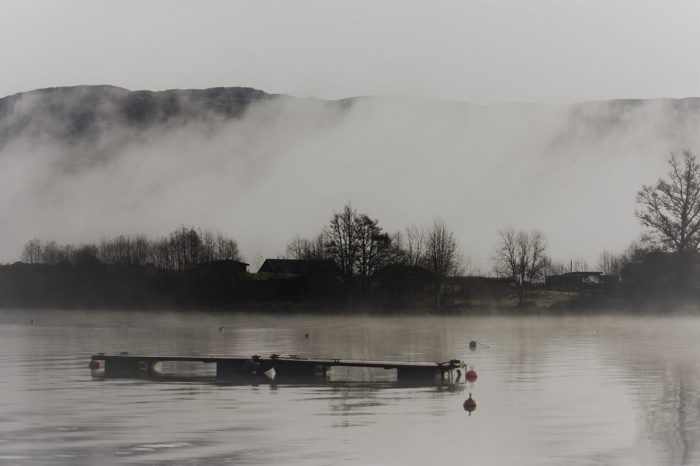
A picture of the Loch
The article would state that the huge creature was “rolling and plunging” [1] for several moments before it disappeared “in a boiling mass of foam”. The witnesses would further recall to the newspaper that upon it vanishing under the water, it “sent out waves that were big enough to have been caused by a passing steamer”.
While sightings might not have been in abundance – in terms of official recorded and documented incidents – when Mackay was interviewed about the incident in the 1980s, she would claim that she was very familiar with the legends of a strange creature that was said to reside in the loch. The article in 1933 also made reference to this when it stated that “Loch Ness has for generations been credited with being the home of a fearsome-looking monster”.
Some researchers state that this use of the word “monster” in relation to the strange creature of Loch Ness is where the moniker first stuck.
The Sighting Of George Spicer
The same newspaper would report another sighting of the Loch Ness Monster later the same year in their 4th August edition. This time, the witness was George Spicer who, along with his wife, would witness the strange beast while driving around the loch. What’s more, they would report to the newspaper that the creature appeared like a “dragon or prehistoric creature”. [2] Even more alarming, the creature was making its way calmly across the road with “an animal” wedged in its mouth.
Further descriptions from Spicer would state that the creature had a “long neck” and a body that was “fairly big, with a high back”. By the time the creature had disappeared into the water, Spicer could not recall if it had a tail or what the feet looked like.
Whether a case of “copy-cat” sightings or whether the articles served as catalysts for other people to have the courage to report their own sightings is perhaps open to debate, and likely a combination of both. Soon after, though, waves of letters landed at newspapers around the region. All would tell of their own sightings of the strange creature. Many would even use the same words such as “dragon” or “monster fish” to describe this intriguing or frightening creature.
The Searches For “Nessie”
The increase in sightings would spark several searches [3] for the Loch Ness Monster that would stretch across the decades. For example, the year following the run of newspaper articles concerning the strange creature, Edward Mountain would arrange and finance a search of the waters, leading a 20-strong team who would be positioned at various locations around the loch.
Each of them was armed with binoculars and cameras, and would keep a vigil over the water every day for five weeks between 9 am to 6 pm. The search mission would begin on 13th July 1934 and would, at least initially, appear to be promising. In total, 21 pictures were taken of possible anomalies in the water. However, ultimately, none of the pictures could offer solid evidence of the creature.
Later in the year in September, the supervisor of the search returned to the region and would end up filming several frames of film (which is believed to have since been lost). Those who did study the film at the time [4] would suggest that while interesting, they probably showed a grey seal.
There were, in fact, earlier search expeditions to the region. For example, in 1901, Sir John Murray organized a search of the loch. The searches would study the temperatures of the loch more than anything else, discovering temperature layers that were much deeper than previously detected. Murray would return a decade later to carry out similar surveys.
Beginning in the 1960s, though, several other searches would begin of Loch Ness.
Initial Loch Ness Searches Of The 1960s
In 1962, the Loch Ness Phenomena Investigation Bureau (LNPIB) was formed (later to be changed to the Loch Ness Investigation Bureau). It would quickly amass members (said to be around 1,000 in its annual report of 1969) [5] all of whom would be encouraged to spend time around the loch in an effort to capture pictures or footage of the alleged monster lurking under the waters. They would even have a viewing platform installed around the loch with a caravan park for its members. Although many accounts and pictures were captured by members of the organization, none would prove to be conclusive enough to prove the creature’s existence. It would cease operations after a decade in 1972.
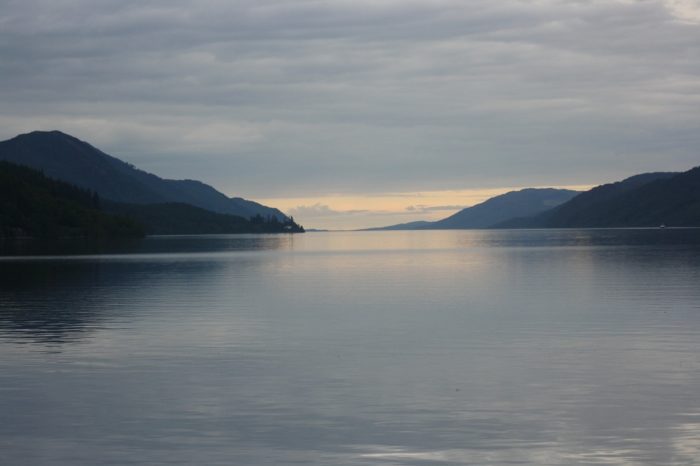
Loch Ness
Five years after the LNIB came into existence in 1967, D. Gordon Tucker would begin his own sonar studies of the loch. Tucker, the head of the Department of Electronic and Electrical Engineering at Birmingham University, had researched the Loch Ness Monster for some time, and had ample expertise on the creature. His work was a collaboration with the LNIB and involved a sonar “net” that was moved across the lake detecting any movement in the water. [6] Once more, although they would not obtain conclusive proof of something untoward under the water, they would pick up several strange readings that appeared to show something moving in a way unlike any creatures known to reside in the loch.
Robert Rines Multiple Searches Of Loch Ness
Beginning in 1972, Robert Rines would lead another group of researchers from the Academy of Applied Science in several studies and searches of the loch, [7] some of which would stretch into the early 2000s. Like Tucker, they would turn to solar technology in order to attempt to search for anomalies under the murky waters. They would also use an underwater camera with advanced lighting that would attempt to capture pictures of anything strange they might find.
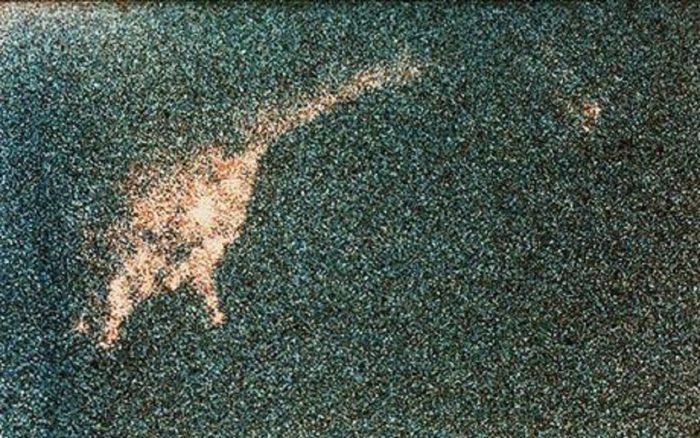
Does this image show the Loch Ness Monster?
On 8th August 1972, it appeared they had discovered something strange when an apparent moving object – approximately 20 to 30 feet in length moving at an approximate depth of around 40 feet. Descriptions of the anomaly would recall that it was a “highly flexible laterally flattened tail”. Despite the excitement of the incident, though, there was still considerable doubt, not least that it very well could have been two separate animals swimming close together. Perhaps even more amazing was the picture of what appeared to be a rhomboid flipper captured by the specialized camera.
A second sonar anomaly was registered around the same time at a similar depth. The camera again managed to capture a picture, this time of two large objects that were surrounded by huge water bubbles perhaps suggesting movement. Although the picture has not been seen often outside of the organization themselves, some of those who did, suggested it actually showed two creatures, giving rise to the suggestion that not just one “monster” lurked in the waters, but a family of them. Furthermore, it was their suggestion that these animals were likely to be similar to the plesiosaur.
More Pictures Captured In 1975
Three years after the Rines study began in 1975, several more intriguing photographs were captured. And while the pictures were still very grainy and blurred, mainly due to the environment and limitations in equipment, they did once more suggest the shape of an underwater animal unknown to science.
One particularly intriguing picture appeared to show, once more, a plesiosaur-like animal. Yet another picture appeared to show a creature with a “gargoyle head” with horns.
Much later, in 2001, researchers continuing the work began in the early 1970s would discover what they believed to be the dead body of a strange animal resembling the ones photographed almost 30 years earlier.
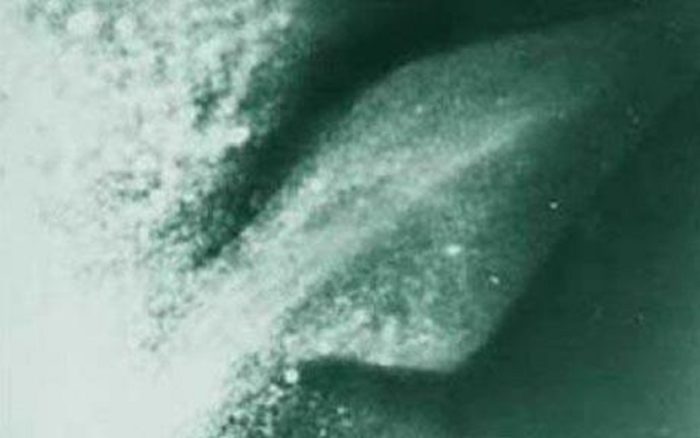
Does this show the fin of the Loch Ness Monster?
Following a study in 2008, the possibility that the creature might have “become extinct” was discussed, with the main reason suggested for this being the climb in temperature of the waters, which the creature may have failed to adapt to.
While the studies led by Robert Rines are perhaps among some of the most exhaustive and intriguing, solid proof of the Loch Ness Monster remained out of the researchers’ reach.
Operation Deepscan
In 1987, 24 boats with advanced echo and sonar equipment would take part in a mass search of the loch. Known as Operation Deepscan, [8] the boats would send acoustic waves at the same time, creating a digital net under the water that would register – hopefully with much more accuracy than previous efforts – any objects of an unsual size or shape.
As we might expect, although there were some intriguing anomalies – one of which appeared to show a large object moving at the bottom of the water – the study would ultimately be inconclusive.
One of the people who had contributed heavily to the operation in terms of sending technical equipment, Darrell Lowrance, would examine the returns of the mysterious object that appeared to be moving. He would claim that “there’s something here that we don’t understand”, adding that whatever that something was it was “larger than a fish – maybe some species that hasn’t been detected yet”.
Ultimately, Lowrance would admit that he couldn’t be sure what the anomaly was and it remained a mystery.
In later years other studies would be carried out, although nothing of any significance was found. As mentioned above, some researchers speculated that the creature – or family of creatures – might have died out. Others, however, would suggest that the creature had never existed in the first place.
The short video below examines just one of the many searches for the Loch Ness Monster in a little more detail.
Historical Accounts Of “Nessie”
We have already examined briefly the accounts of D. Mackenzie and George Spicer. However, other accounts, particularly from the 1930s onward are on record. We could also add the sighting of Alexander Macdonald to these early accounts, who in 1888 claimed he witnessed a “large stubby-legged animal” emerging from the waters as Macdonald watched in fascination and fear from the shore. When he later reported the sighting, he would state that the creature appeared like a huge salamander.
We will start our look at some of the most intriguing encounters, though, with what is possibly the earliest recorded sighting of the Loch Ness Monster in an account by the seventh-century hagiographer, Adomnan, sometimes known as Saint Adomnan of Iona or Eunan, who would document the life of Saint Columba, the person who was informed of the strange creature in the mid-sixth century, around 100 years before he documented it.
The Loch Ness Monster Sighting Of Saint Columba
According to the writings of Adomnan in Life of St. Columba, the incident in question took place in the year 565. Saint Columba was in the land of the Picts staying near the River Ness, which connects to the northern part of Loch Ness.
While staying there, he was told an account of the bizarre, monstrous creature by locals of the area who were at the time, burying one of the local residents. They would inform Saint Columba that the dead man had met his unfortunate end while swimming in the river. He was, they would claim, attacked and killed by a vicious “water beast” which dragged him under the water as it clawed and ravaged his body. By the time they managed to reach the man in a boat, he was long dead.
Intrigued, it is said that Columba arranged for one of the locals to swim across the river, eager to see if the creature indeed appeared. According to the writing, it did. However, and perhaps the shakiest part of the account, Saint Columba was said to make a sign of the cross ordering the monstrous creature to stop. Apparently, it did, giving the appearance that it had been “pulled back with ropes”.
This account is an important one as, at least to those who not skeptical of it, suggest the writing is proof of a prolonged existence of a monster-like aquatic animal as far back as 1500 years ago. Others, however, remain not only skeptical of the connection, but of the authenticity of the account itself.
Sightings Of Hugh Gray, And Arthur Grant
As we have mentioned, there were a plethora of sightings and alleged encounters of the Loch Ness Monster in the early 1930s.
For example, on 12th November 1933, Hugh Gray [9] would manage to capture what is widely acknowledged to be the first photograph claiming to show the strange beast. However, this picture – like others that would follow – was subject to scrutiny and claims of it being a hoax. Some eagle-eyed people believed the picture clearly shows nothing more than a darkened dog’s head. The original negative was lost, but when slides were discovered three decades later, it appeared to show nothing more than an otter rolling on the surface of the water.
The following year on 5th January 1934, an even stranger encounter would unfold. According to Arthur Grant, a veterinary student, he was riding his motorcycle at around 1 am near the loch when a strange creature appeared out of nowhere forcing him to apply his brakes suddenly. As the night was lit perfectly by the moon, he could make out several details of the bizarre monster as it walked calmly across the road on its way to the water.
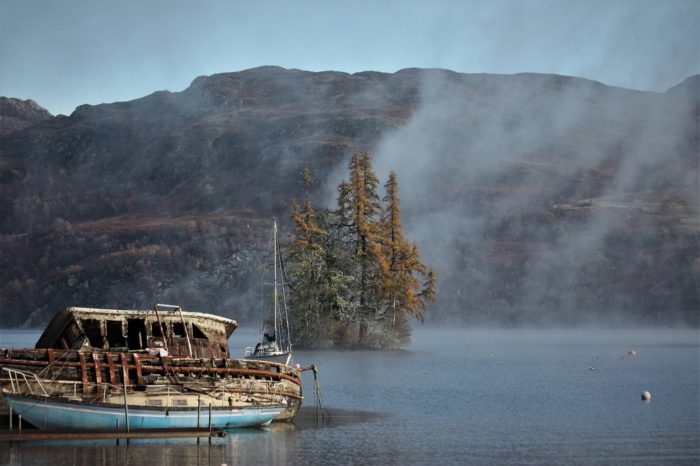
A ruined boat on the waters of Loch Ness
He would state later that the creature had a long neck with a particularly small head and reminded him of a combination of a seal and plesiosaur. He quickly stood up his motorcycle and climbed from the vehicle. By the time he turned his focus to the water, though, only several ripples on the surface were left to suggest the creature had been there.
It is perhaps interesting that the description once more claims the creature was very plesiosaur-like. Grant would produce a sketch of the creature, and, like other encounters, it divides opinion as to the authenticity.
The Picture Of Peter MacNab
In the summer of 1955, another picture was captured, this time by Peter MacNab. However, the picture would remain secret and unpublished until two years later when it appeared in a book on the creature. It appeared to show two black “humps” poking out of the surface of the water.
Like other photographs, there were plenty of skeptics on hand with their own theories as to what it showed. One such skeptic would state it was nothing more than wave affects on the water. Others would go even further and suggest that the picture was outright doctored for the sake of the book it originally appeared in.
Only the six months previously in December 1954, the crew of a fishing boat on the loch would notice a huge object, approximately 500 feet under the water with their sonar equipment. Whatever it was, the object would keep pace with them for several minutes before disappearing.
The Dinsdale Film
One of the most intriguing pieces of footage claiming to show the Loch Ness Monster was filmed in 1960 by an aeronautical engineer named Tim Dinsdale. He had gone to the loch especially to try and capture footage of the elusive beast. According to his later claims, he had managed to finally film the footage on the final day of his mission.
Although the footage was grainy, it did indeed appear to show a hump moving across the water. He would later describe it as a red color with a strange “blotch” on his side.
Like other such pictures and pieces of footage, there were plenty of detractors who insisted the footage was not what it appeared. One particular accusation was that it was, in fact, an out of contrast piece of footage that showed nothing more than a boat on the water. They would continue that if you were to alter the contrast, a man on the board could even be seen.
However, there was a further twist to the footage, when it was subject to a digital enhancement on a 1993 television documentary called Loch Ness Discovered. When the footage was studied with this digital enhancement, it would appear that the body of the creature was perfectly visible under the water – something that could not be seen in the original unenhanced film.
One of the people involved in the enhancement would state afterward that they had previously thought the “Loch Ness Monster was a load of rubbish”. However, since studying the digitally enhanced version of the footage, they were now “not so sure”.
You can check out the video to see the Dinsdale Film.
The George Edwards Photographs – A Mixture Of Hoax And Genuine
One of the most recent photographs would enter the public domain in the summer of 2012 when the captain of a boat taking tourists up and down the loch would claim to have photographed the elusive creature. He claimed the picture was taken the previous year in November 2011.
Off the back of Edwards’ claims would stem the notion that there was a deeper, unknown part of the loch, although this is almost universally rejected by most researchers.
It would also come to light that Edwards had previously taken a picture of an object claiming to be the Loch Ness Monster before back in 1986. One researcher, Dick Raynor, would claim in a television show that Edwards had admitted to him that the photographs were, in fact, fakes.
When confronted with this apparent expose of his pictures as a hoax, Edwards would apparently admit that the 2011 picture was faked, but that the picture in 1986 was genuine. As we might imagine, the jury is out on whether Edwards is being fully honest with this admission.
However, we might keep in mind that there are several cases of UFO sightings that have been revealed to be a case of the first, initial encounter being genuine, only to then have the witness fake subsequent encounters for a variety of reasons, not least for financial gain. Whether that was the mindset here remains open to debate.
You can check out that incident and fall out of claims and counterclaims below.
Other Videos And Pictures Of The 2000s
In the same year as the debatable Edwards footage, another captain of a boat on the loch, Marcus Atkinson, would notice a strange sonar anomaly while heading over the waters. He would capture an image of the sonar reading, which was approximately 5 feet wide and appeared to be at a depth of around 75 feet. It would, he would claim, follow his boat for several minutes.
Two years later in August 2013, a tourist, David Elder would capture five minutes of footage of a mysterious movement under the water of the loch. The video would show what appeared to be a 15 foot “solid black object” just under the water. Elder would later claim that he was attempting to photograph a swan when he noticed the strange, black shape. Perhaps unbelievably, skeptics would suggest the strange waves captured on the film were the result of gusts of wind.
It isn’t just individuals who have captured these strange sightings on or under the water of Loch Ness. In April 2014, for example, a satellite image from Apple Maps would show a bizarre patch just under the water. It had the look of a large animal which some estimates would suggest was around 100 feet long. To some, it was one of the most recent images of the famous Loch Ness Monster, although opinions differ on what it might be.
We will now, though, turn our attention to perhaps the most famous photograph ever taken of the Loch Ness Monster. And it is a picture that, as we might expect, remains controversial as to its credibility.
Before we do so, check out the video below.
“Surgeon’s Photograph” – Nothing But An Elaborate Hoax?
Known as “Surgeon’s Photograph”, the picture in question is perhaps one of the most controversial in history. It is claimed by most researchers to have been taken by a gynecologist, Robert Kenneth Wilson. However, when it was published in April 1934 in the Daily Mail newspaper, Wilson would refuse to have his name printed as the person who captured it – said by most researchers to be the first to show what was claimed to be the head and long neck of the creature. Hence, it would receive the nickname, the Surgeon’s Photograph, which has stuck since.
Wilson would state, though, (without the use of his name, at least initially) that he was on the banks of the loch when he noticed the strange shape in the water. He immediately lifted his camera and took four quick pictures.
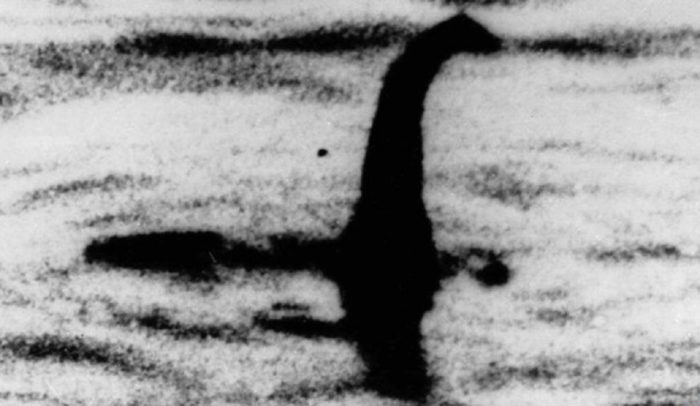
The world famous picture alleging to show the Loch Ness Monster
Two of these did not show anything at all as they didn’t develop, but two of them most definitely did, with the first being the clearest of all. It was this picture that was published in the Daily Mail, and subsequently in newspapers all over the world for over half a century. Despite skeptics offering a range of explanations as to what the photograph actually showed, for many, it was proof of the mysterious creature’s existence.
There were several reasons for the skepticism, though. Not least that all versions of the photographs shown in documentaries and newspaper articles appeared to be cropped images. The original had much more background, which seemingly showed the “monster” to be a lot smaller than the cropped images suggested.
However, in the 1999 book Nessie – The Surgeon’s Photograph Exposed, it would be suggested quite convincingly, that not only was the picture a hoax, [10] but the reasons for it were just as intriguing.
A Lesson In Revenge
According to the book, using an already published but seemingly forgotten newspaper article from 1975 in part to prove the claim, the Surgeon’s Photograph was indeed a hoax. However, rather than attempting to fool the general public, the main aim of the “joke” was the Daily Mail themselves. The main person behind the hoax was Marmaduke Wetherell, who commissioned his son-in-law, Christian Spurling to build the Nessie monster from a toy submarine he had recently purchased from a Woolworths store.
The reason for the hoax was simple. The Daily Mail had publicly and brutally ridiculed Wetherell when he claimed to have discovered “footprints” of the Loch Ness Monster which then turned out themselves to be a hoax. Not forgetting the public humiliation, Wetherell put his plan in motion. As well as Spurling’s assistance (who was a specialist in sculpture), Wetherell’s own son, and an insurance agent, Maurice Chambers would also assist.
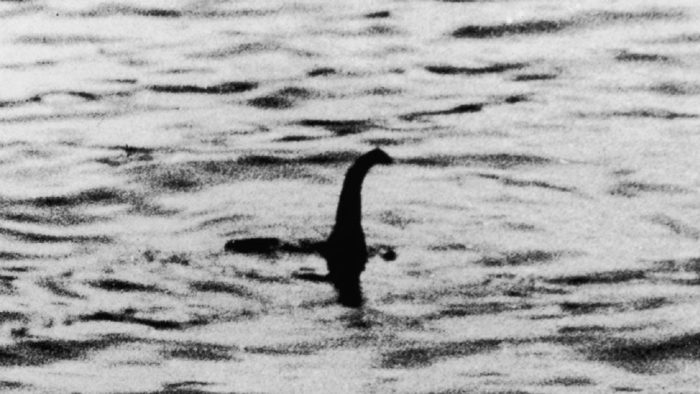
The famous image of the Loch Ness Monster
The pictures were taken in Loch Ness, however, just near the Altsaigh Tea House. According to the tale, several seconds after taking the pictures – which were taken right near the bank of the loch, the group heard the water bailiff approach (a security officer who would patrol and police large bodies of water). Wetherell would push down on the submarine with his foot, forcing it under the water where, unless it has crumbled to the passing of time, it likely remains to this day.
Having secured the photographs, though, Wetherell would put the next part of his plan into action. Not being able to approach the newspaper himself, he would recruit a friend of his, Robert Keneth Wilson.
A Demonstration In The Ease Of Faking Pictures!
According to the book, Wilson himself enjoyed a good “practical joke”, and was more than happy to help his friend. This also explains why he would not allow his name to be used with the picture – as he knew it was a hoax.
After Wilson had the pictures developed, he did indeed sell them to the Daily Mail newspaper, who not only bought the pictures, it would appear, they bought the whole hoax.
There is little doubt that the account of the elaborate hoax is correct. Aside from the satisfaction those involved undoubtedly felt, especially Wetherell, they were also handsomely financially compensated for their work by the very people the hoax was aimed at.
It is an interesting case all around. And while this – the most famous picture of the creature – is almost certainly a hoax, that isn’t necessarily the case for all sightings, pictures, and pieces of video footage. The whole episode, however, showed how easily such pictures could be faked, as well as highlighting the need to check and then double-check sources and incidents.
The short video below examines the famous photograph and the claims of it being a hoax in a little more detail.
What, If Anything, Might It Be?
As we might imagine, there are as many explanations offered for what the Loch Ness Monster might actually be as there are significant sightings of it. Perhaps the most intriguing take on the subject and mysteries of the Loch Ness Monster would come from Ronald Binns, who would offer that there was most likely no one specific explanation for the legends.
He would state, essentially, that a great many of the sightings were the human flaw of people seeing what they wanted to see. Binns is careful to state that while he certainly doesn’t put each and every sighting to being a hoax, but rather a combination of misidentifications, the power of the mind to believe in the legends and folklore surrounding the creature, as well as the human trait of holding out hope that there just might be something to the legends after all.
Binns’ theories are intriguing as we could take them a step further and align them with the psychic internet theory – that the creatures witnessed were indeed very real, but that they were the products of the human mind – thoughts and a desire to see the creature brought to life by the unknown, largely untapped, and not understood power of the human mind.
While that is pure speculation on our part and certainly not something that Binns has suggested, there are plenty of other alternative theories as to just what might be responsible for the plethora of sightings of the strange creature said to reside under the grainy, murky waters of Loch Ness.
Misidentified Animals
Perhaps one of the most consistent explanations regarding what the Loch Ness monster might be are those that state the sightings are most likely of large eels – which themselves would be quite a phenomenon due to such size, but not at all impossible. It is known for example, that many eels are found in Loch Ness.
A DNA test of the loch in the last few years, for example, revealed large quantities of eel DNA in the water. That same tests would also rule out such possibilities that sightings of the Loch Ness Monster were nothing more than Greenland sharks that might have ventured into the lock, as no DNA samples for the sharks came to light in the tests.
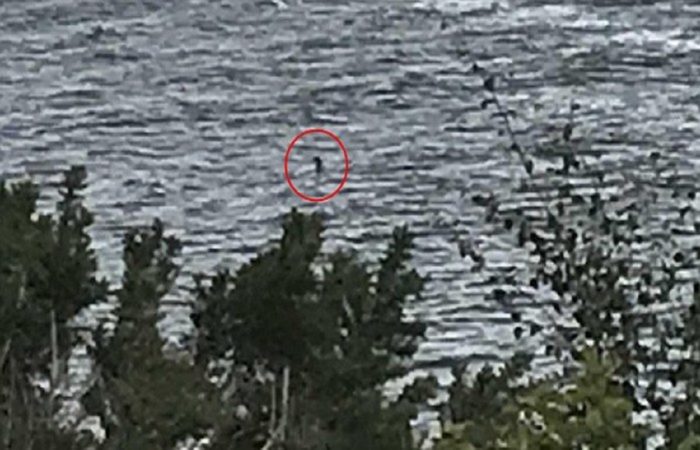
Does this image show the Loch Ness Monster?
Perhaps even more bizarre are the claims that at least some of the sightings could be of elephants that might have been allowed to bathe in the lack by circus owners traveling through the region. It is an interesting notion, and only an examination of the dates of such sightings compared with the records of circus visits to or near the region would reveal such a connection (and indeed might prove impossible).
As well as such seemingly obscure theories, there are those that state some of the animals that call the water and the land around it home might also be to blame for a great many of the sightings. Many otters are known to reside there, as well as deer and a number of different species of bird.
A Link To The Dinosaurs?
There are, of course, much more outlandish proposals and possibilities as to just what the Loch Ness Monster might be. For example, as mentioned several times throughout with the descriptions of the creature resembling the presumed extinct plesiosaur, there are some theories that suggest it might not be extinct after all. Or, at the very least, a direct descendent of the dinosaur-like creature has survived deep into the modern age and possibly remains alive today.
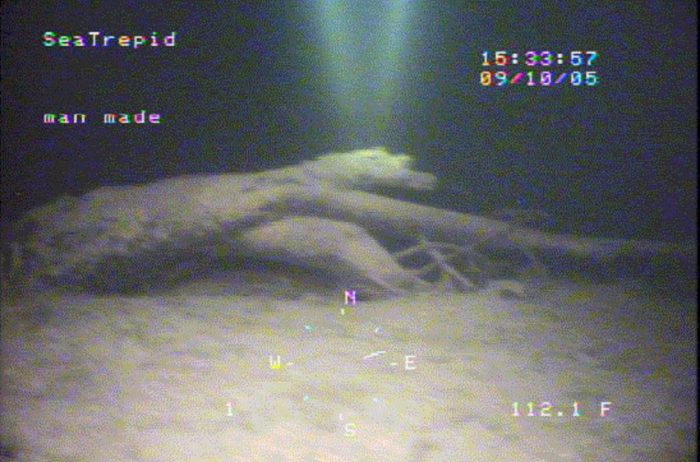
Is this an unknown sea creature or simply a tree trunk
However, we should note, while not impossible, it is largely accepted that the waters of Loch Ness would most likely be too warm for the presumably cold-blooded plesiosaur, especially in terms of its food supply. However, this might also explain why some sightings have claimed to see the monster emerge from the water or return to the water from the surrounding land. Might it be possible that such venturing out of the water was to search for food that the water couldn’t supply?
Perhaps the most damning piece of evidence to dismiss the plesiosaur theory is that, if what we know of them is true, it would have to surface from the water at least several times a day in order to breathe. And while it might be possible to do this without constant attention on the lake, the fact that the region has been subject to constant vigils, video cameras, and complete scans of the entire stretch of water, it is unlikely that the creature wouldn’t have been spotted a lot more than the several sporadic occasions.
A Need To Consider A Supernatural Explanation?
Perhaps the only other area to examine is, like creatures such as Bigfoot and other strange apparently mythical, legendary creatures, is that there might be a strange, supernatural connection to the sightings of the Loch Ness Monster. And it might also explain the apparent likeliness to the plesiosaur of a previous long-gone age.
Might it be that these creatures are some kind of peek into the past, possibly the natural opening of a doorway in space-time that we don’t understand, but allows these creatures to step into our world temporarily before vanishing again just as quickly? They are not really here, physically, but much like a ghost that is a manifestation of unknown energy, these creatures are very much the same. Perhaps those who have witnessed the Loch Ness Monster close up are, in fact, some of the few people to see an actual “living” dinosaur, albeit the ghost or essence of one.
Or night the creatures be very real, and do physically cross over from their time, or even dimension into ours? But only temporarily before they are engulfed back into their own time or plateau of existence once more. This is possibly something they have little control over and perhaps are not aware of. After all, modern scientists are beginning to admit the possibility of multiple dimensions existing all around and in conjunction with our own. Might sightings of the Loch Ness Monster, as well as other strange creatures like Bigfoot, and even UFOs, be the result of these multiple dimensions?
A Small Piece Of A Misunderstood Puzzle?
As bizarre and speculatively outrageous as such a suggestion appears, the more we study the world around us, the more we realize that such seemingly strange suggestions appear to make more sense than we might think. And would certainly explain the quick disappearances of the apparent beast, as well as why complete drags of the waters find no anomalies on some occasions and do so on others.
This could also prove to be the case for a whole host of other strange phenomena. Indeed, as we have mentioned previously in other writings, an understanding of one bizarre mystery will almost certainly lead to an understanding of other unsolved enigmas that have wrapped some of the most intelligent of minds up for generations.
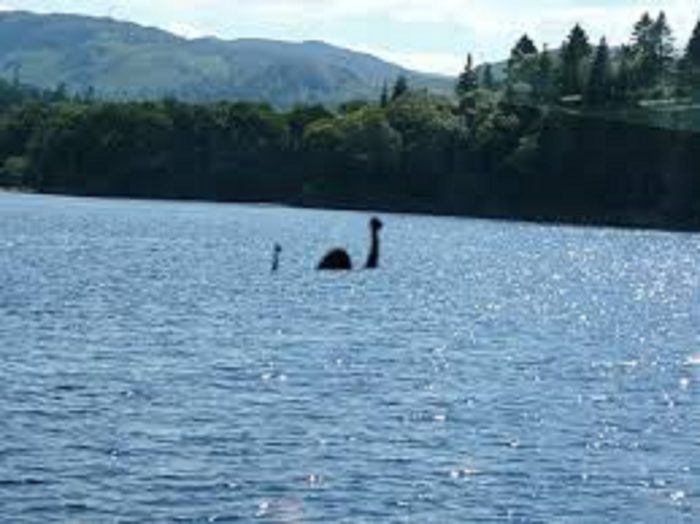
Is this a real image of the Loch Ness Monster?
Might the water itself have something to do with the bizarre creatures and how they manifest out of nowhere? We have mentioned on several occasions that many UFO sightings occur over or near water. Although we don’t understand it, might something under or even in the water result in such manifestations? Or even open that speculative gateway that allows entry into this world from the respective places these anomalies usually belong?
Indeed, the questions around the legends of the Loch Ness Monster, much like other unsolved and intriguing mysteries that captivate researchers and enthusiasts around the world, often takes us down roads we were not expecting to travel down. Especially when there is no clear, widely agreed-upon explanation for such strange events.
Exciting Recent Sonar Image
At the end of September 2020 [11] interest and excitement in the Loch Ness Monster was suddenly ignited once more following an apparent sonar image of an object approximately 30 feet long and around 500 feet below the water captured by a team of researchers who conduct regular searches for the elusive aquatic beast.
Furthermore, rather than being just intriguing, the image has widely been praised as the “most compelling image yet” of the alleged water monster. A sonar expert, Craig Wallace, would even go on record to state that the sonar image was “100 percent genuine!”
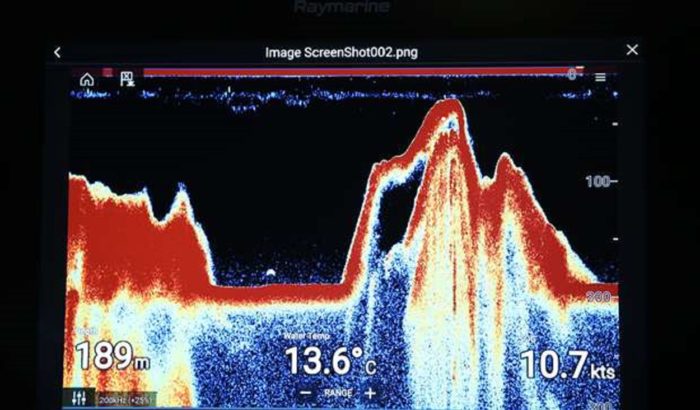
The director of Cruise Loch Ness, Ronald Mackenzie, noticed the anomaly and would soon release it to the press. Mackenzie was captaining the Spirit of Loch Ness boat (which gives tours of Loch Ness) when he first noticed the strange sonar image. He would state to the local media that they were about halfway through the tour at around 4:30 pm. It was as he was turning the boat around when he caught sight of the sonar anomaly.
He would recall how it was “right bank smack in the middle of the loch” at a depth of just over 500 feet. He was, however, unable to tell if the object was moving or not. It was visible for approximately 10 seconds after which the boat had moved away from the apparent sea creature. He would continue that although he had spent regular time on this most mysterious stretch of water, this sighting was easily the most memorable.
State-Of-The-Art Sonar Equipment “Can’t Lie!”
According to Mackenzie, rather than just being pure luck, the reason for the impressive sonar image is the “state-of-the-art sonar” technology installed on the boat. He would assert that “it can’t lie – it captures what’s there!”
Although he wasn’t certain that the sonar image shows the Loch Ness Monster, he is certain that “something” resides in the water there.
Craig Wallace would also elaborate further when asked for comment. He would state that there is “no question” that the image shows a very real anomalous object. He would, though, cautiously state that the image likely showed a particularly large fish or even an eel as opposed to the Loch Ness Monster.
Another Loch Ness Monster researcher, Steve Feltham, would also weigh in with praise for the captured image. He would state that it was “extremely exciting” adding there was “no comparison in clarity”. He would further state that Mackenzie is a credible researcher who didn’t “seek publicity” and did not embrace wild claims of the monster of Loch Ness. What’s more, he wasn’t the sort of person who would “cry wolf”.
It certainly throws open the door once again as to just what might be lurking under the water of Loch Ness. Whether further images are captured or other sightings come to light remains to be seen.
Incidentally, there have been eight official sightings of the Loch Ness Monster in 2020. How many others might have gone unreported is a matter of debate.
Still Much Mystery Surrounds The Loch Ness Monster!
While it appears that the Loch Ness Monster, if indeed it did ever exist, might no longer reside in the waters today, it remains a subject of research and fascination still today two decades into the twenty-first century. And while sightings may be decreasing with recent studies no longer finding even the anomalies they once did, there remains the possibility that sightings may begin again at some random point in the future.
Perhaps the fact that such anomalies were discovered in initial studies in the 1960s and 1970s but no longer today suggests that something was indeed in the waters during this period in time. Or perhaps it is just a testament to the limits of the technology over half a century ago.
What if, on the other hand, the creature, or creatures, have migrated elsewhere, perhaps north to escape the heating waters? Or perhaps there are unknown caverns or water tunnels at the bottom of the loch which the creature has access to? Might the strange creature be related to some of the other “Nessie-like” creatures alleged to reside in other water networks, many of which are in the continent of North America?
Or might it be that the claims, pictures, and footage are nothing more than overactive imaginations and the desire for fame, fortune, or both? Even the most skeptical and suspicious of minds would surely be hard-pressed to dismiss each and every sighting as such.
Whatever the truth of the mysterious creature that is said to have resided in Loch Ness – possibly for at least 1,500 years – might one day prove to be, it is very likely that something more solid than mere fabricated stories will lie at the heart of it.
The video below is a documentary about the monster of Loch Ness.
Expert Opinion
Over centuries, legends of the Loch Ness Monster have featured ancient chronicles, alleged photos, and intriguing sonar readings. Devoted investigators emphasize the sheer volume of reported sightings, particularly from the early 1930s onward, including various accounts of serpentine humps and plesiosaur‑like shapes. While repeated search expeditions revealed tantalizing evidence—strange underwater anomalies and fleeting images—no official data has yet definitively confirmed Nessie’s existence beyond all doubt.
On the flip side, competing explanations abound: notorious hoaxes, misidentified wildlife such as eels or seals, and possibly even unusual wave movements that create illusions. Increasingly advanced technology, from sonar grids to satellite imagery, has narrowed the likelihood of an actual prehistoric beast. Yet inexplicable anomalies still stir interest, leaving experts torn between dismissing folklore completely and speculating there may be a rare or misunderstood phenomenon at work.
Rate of hoaxes and plausible misidentifications argue against a giant beast, yet tantalizing sonar hits keep the discussion open.
Marcus Lowth is an expert on this topic and has over 20 years experience studying and reporting in these fields. Marcus has written several books and appeared on TV shows as an expert investigator discussing these topics.
References
| ↑1 | Strange Spectacle In Loch Ness, Inverness Courier, May 2nd 1933 |
|---|---|
| ↑2 | Is this the Loch Ness Monster?, Inverness Courier, August 4th, 1933 |
| ↑3 | Loch Ness Expeditions, Loch Ness.Org http://www.loch-ness.org/expeditions.html |
| ↑4 | Loch Ness “Monster” Film, October 5th, 1934, The Times (page 12) |
| ↑5 | The Loch Ness Investigation, Annual Report 1969 https://www.lochnessproject.org/adrian_shine_archiveroom/paperspdfs/LOCH_NESS_LNI69.PDF |
| ↑6 | Zoologist in the depths with Nessie, The Glasgow Herald, December 20th, 1968 (page 18) https://news.google.com/newspapers?nid=2507&dat=19681220&id=OX9AAAAAIBAJ&pg=3828,3632069 |
| ↑7 | Loch Ness Findings, Dr. Robert Rines https://web.archive.org/web/20060823232005/http://www.aas-world.org/sparks/V1-four/lochness.html |
| ↑8 | The Loch Ness Project https://www.lochnessproject.org/adrian_shine_archiveroom/papershtml/loch_ness_scottish_naturalist.HTM |
| ↑9 | Abominable Science! Origins of the Yeti, Nessie, and Other Famous Cryptids, Daniel Loxton and Donald Prothero, ISBN 9780231 153218 (page 142-144) |
| ↑10 | The Loch Ness Monster and the Surgeon’s Photo, Museum of Hoaxes http://hoaxes.org/nessie.html |
| ↑11 | Excitement as compelling new evidence emerges that Loch Ness Monster exists, Andrew Dixon, The Inverness Courier, October 5th, 2020 https://www.inverness-courier.co.uk/news/nessie-hunters-excited-as-compelling-evidence-loch-ness-monster-exists-emerges-214223/?fbclid=IwAR3ltGUEYe4T0voQM9qiJEW9ota8Lyjhqk_Vg0hSznidO7s8Zs9sYnV-2p4 |
Fact Checking/Disclaimer
The stories, accounts, and discussions in this article may go against currently accepted science and common beliefs. The details included in the article are based on the reports, accounts and documentation available as provided by witnesses and publications - sources/references are published above.
We do not aim to prove nor disprove any of the theories, cases, or reports. You should read this article with an open mind and come to a conclusion yourself. Our motto always is, "you make up your own mind". Read more about how we fact-check content here.
Copyright & Republishing Policy
The entire article and the contents within are published by, wholly-owned and copyright of UFO Insight. The author does not own the rights to this content.
You may republish short quotes from this article with a reference back to the original UFO Insight article here as the source. You may not republish the article in its entirety.
